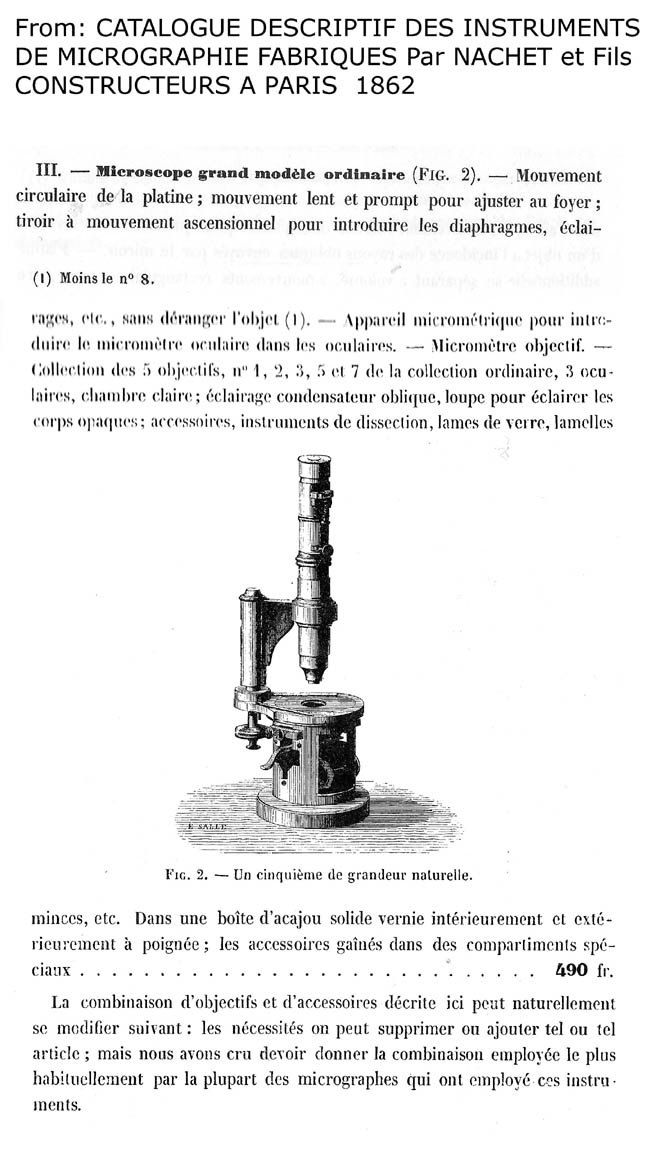DESCRIPTION:
Signed on the arm: 'NACHET, Opticien a Paris The original fitted case accompanies the instrument. This drum or Martin-type microscope stands at approximately 13 inches high (minimum), with a 4 1/4 inch heavy leaded base. Coarse focusing is simply by sliding the tube, fine is by fine-threaded screw acting from the underside on the sprung continental-style limb. There is a planoconcave mirror and a carrier under the stage to accept substage fittings. One of the unique features of these Nachet drum models was the pull-out substage holder which could hold a polarizer, a variety of stops, etc. It is moved up or down by lever.
 This model was pictured in the Nachet catalogs, but not after 1862, as shown in the 1862 catalog entry to the left. The instrument lacks the address, and also lacks the 'et fils' after 'Nachet.' The lack of 'et fils' would date it to before 1854. The lack of an address is unusual and may have indicated a time when a new move was contemplated to but not yet finalized, hence the tentative dating to about 1850 before the move to Rue Serpente 16 (thanks to Jeroen Meeusen for this information).
For history of the Nachet company, please see the historical information under the the entry for the Nachet
Grande.
This model was pictured in the Nachet catalogs, but not after 1862, as shown in the 1862 catalog entry to the left. The instrument lacks the address, and also lacks the 'et fils' after 'Nachet.' The lack of 'et fils' would date it to before 1854. The lack of an address is unusual and may have indicated a time when a new move was contemplated to but not yet finalized, hence the tentative dating to about 1850 before the move to Rue Serpente 16 (thanks to Jeroen Meeusen for this information).
For history of the Nachet company, please see the historical information under the the entry for the Nachet
Grande.